By Cara Waters
Work is set to begin on Melbourne Lord Mayor Sally Capp’s ambitious Greenline linear park, but the elevated pathway modelled on New York’s High Line has now been scaled back to a four-kilometre riverside promenade, with plans for raised sections in doubt.
Capp’s grand plan for a park along the Yarra has now got some cash behind it, with the federal government pledging $20 million before the election and the City of Melbourne setting aside $40 million in next year’s budget.
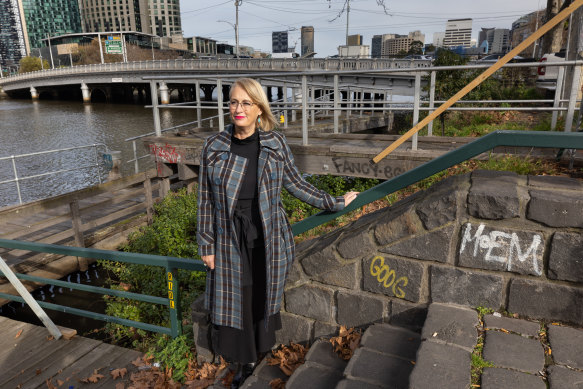
Lord Mayor Sally Capp has big plans for the banks of the Yarra.Credit: Jason South
But the council has not yet approached the state government for the $100 million in funding it is seeking, partially because Capp said the council is not sure which part of government is responsible.
“Not formally, because part of it is working [out] who’s going to be the responsible minister,” she said. “Where does it sit? Is it in precincts? Is it in transport? Is it in tourism? There are planning elements.”
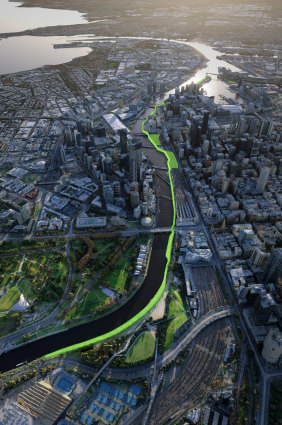
An artist’s render of the planned Greenline Project.Credit: City of Melbourne
The pathway between Birrarung Marr and the Bolte Bridge was a key plank of Capp’s campaign in both the 2018 council byelection and 2020 election.
The lord mayor’s “passion project” was initially envisaged as parkland built on huge decks above rail yards in the city with elevated cycling and walking tracks connecting areas.
But the vision has been scaled back, reducing what was envisaged as a 10-kilometre trail linking Royal Park with Port Philip Bay through North Melbourne, Docklands, the CBD and Southbank Boulevard to just four kilometres.
A proposed swimming pool along the edge of the Yarra has been axed and plans for elevated tracks are in doubt.
The project still requires $300 million in funding with $100 million expected to come from the City of Melbourne, $100 million from state government and $100 million from federal government.
With $60 million committed, Greenline is $240 million short, but work is set to begin by the end of this year on “floating wetlands” in the Yarra.
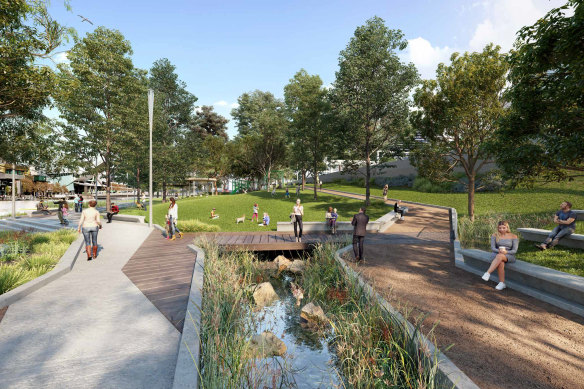
An artist’s impression of the Greenline at Batman Hill Park.Credit: Suppiled
Capp said the name Greenline was “really just a working title” and there may be no raised walkways at all, depending on what the designers came back with.
“I’d love it to be those different perspectives, so that’s certainly part of the brief,” she said. “People [could] walk up and over the Banana Alley vaults and come down on the other side but one of the biggest issues we’ve got with the north bank is the interruptions of incredibly busy intersections.”
Capp said instead of doing something completely new, Greenline involved regenerating existing urban infrastructure along the Yarra’s north bank in a “continuous promenade”.
“That promenade will connect people down to the Yarra because at the moment, actually, we’re a long way away from the Yarra at most places along there and it will connect green open spaces that will be upgraded, created and revitalised with activities,” she said.
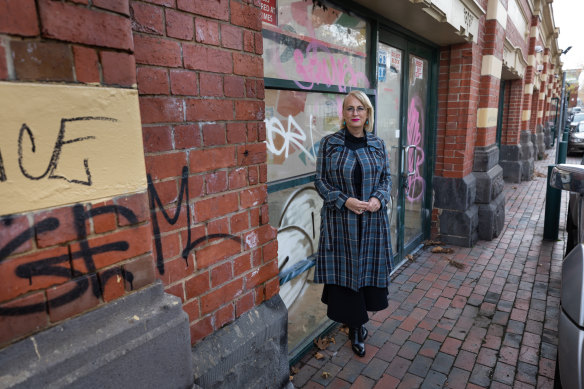
The walkway might go up and over the Banana Alley vaults. Credit: Jason South
The council has been criticised by the Victorian Chamber of Commerce for having no business case, cost benefit analysis or modelling for the project. But Capp said councillors had endorsed an implementation plan for Greenline, and now it was a matter of getting different responsible bodies on board.
“There are about eight different agencies that have responsibility along the Yarra, so a huge amount of the work to date has been working with Melbourne Water, working with Parks Victoria, working with VicTrack, Fed Square, which is now Map Co, and really understanding how are we all on board with this project,” she said.
“How do we co-ordinate that on a big infrastructure project like this? It is complex and complicated. But the determination, the perseverance, and the focus everybody has on the end goal has been really terrific.”
The City of Melbourne has called for expressions of interest on Greenline, and Capp said a master plan would be created this year, along with engineering and design, as to how to create a continuous pathway.
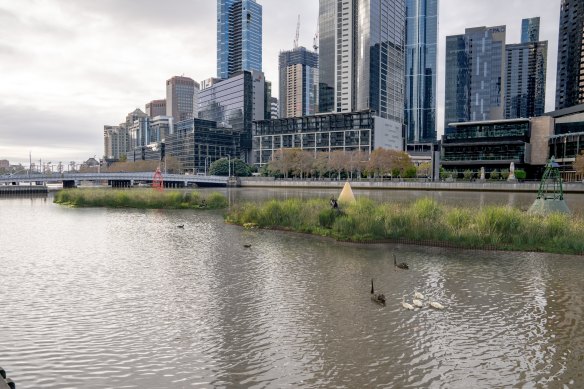
An artist’s impression of the proposed floating wetlands in the Yarra River.
City of Melbourne chief executive, Justin Hanney, said the council had a business case for Greenline, an economic impact analysis and Ernst & Young was undertaking a peer review of the business case alongside a quantity surveyor assessing the schematic designs.
“Once that’s completed then we will share that with others,” he said. “We’re in a pretty good position on Greenline.”
Andy Fergus, advocacy lead for the Urban Design Forum, said switching from an elevated walkway to a riverside promenade made sense.
“Shrinking it down in scale is actually about being realistic and delivering a concrete outcome that can then become a prototype for the other parts of the river as well,” he said.
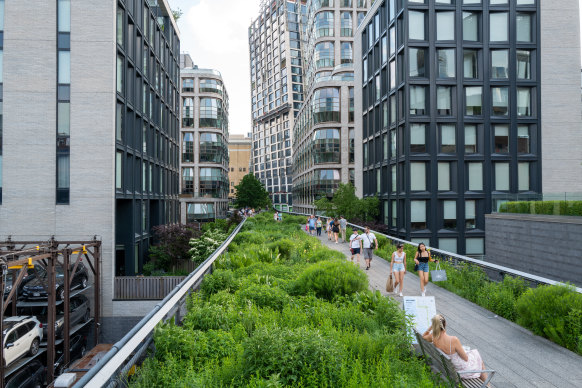
Manhattan’s High Line park. Credit: Getty Images
Fergus said it was difficult to generate a business case for a park with business cases hinging on retail expenditure, construction jobs or private development outcomes.
“Parks can’t and shouldn’t do that, they shouldn’t be conceived in that way,” he said. “They need to be looked at as a whole of economy proposition around preventative health and well-being.”
Melbourne University associate professor of architecture Rory Hyde said while he was excited by the ambition of the project, there was a lack of detail on what Greenline would be like, with only a couple of renders and the project mainly comprising vision statements.
“This is a river promenade,” he said. “Will it have the same buzz?”
“It can’t be the High Line which was a fundamentally new way to move through a city.”
The Morning Edition newsletter is our guide to the day’s most important and interesting stories, analysis and insights. Sign up here.